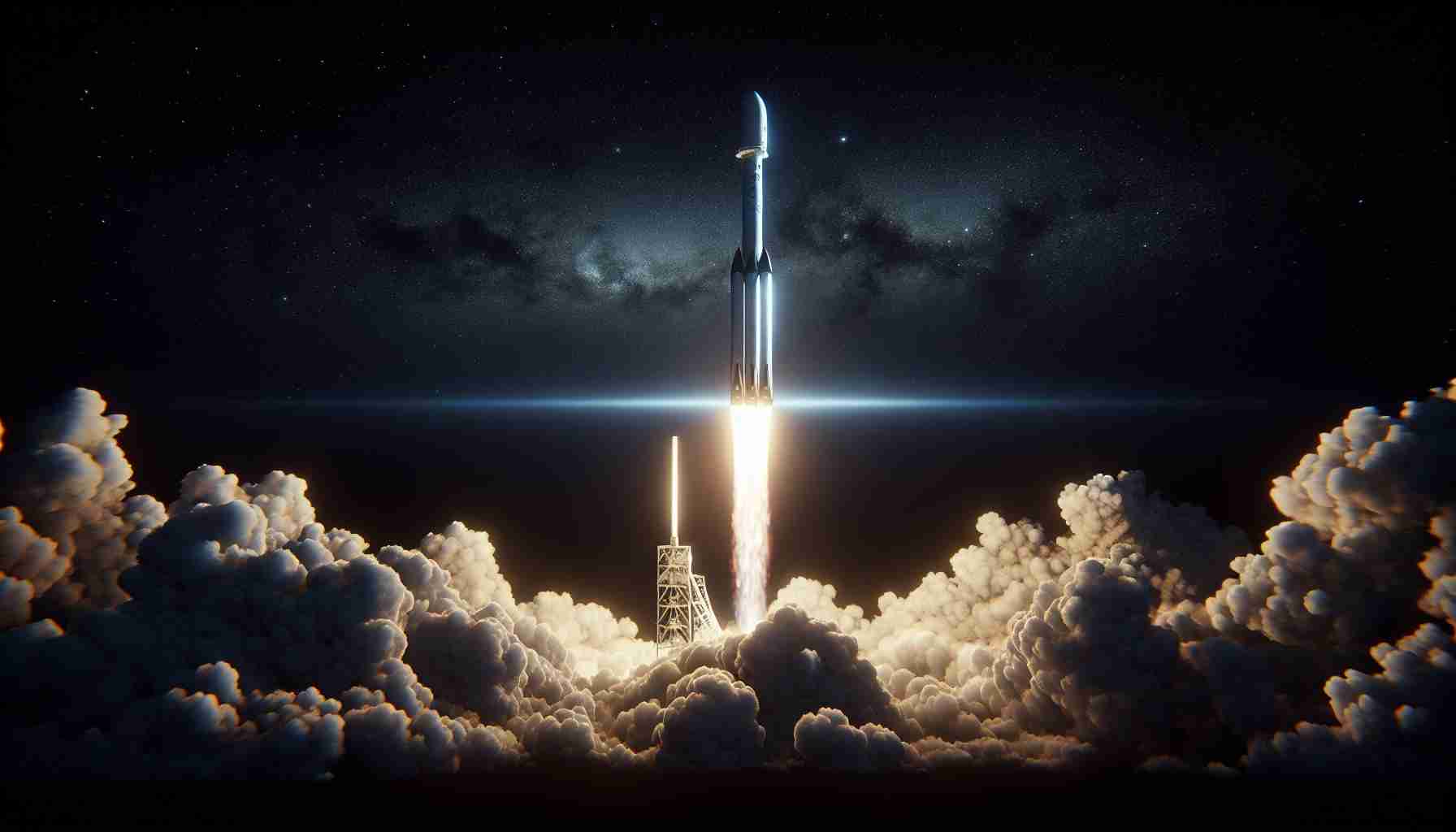- SpaceX’s Falcon 9 rocket launched from Vandenberg Space Force Base, carrying 23 Starlink satellites, and creating a stunning visual spectacle in the Southern California night sky.
- Despite a minor delay, the launch at 9:09 pm EST on February 11 became a social media sensation, captivating audiences with its brilliance.
- The Falcon 9’s first stage successfully returned and landed on the SpaceX drone ship “Of Course I Still Love You” in the Pacific Ocean.
- This was SpaceX’s 445th mission, emphasizing its ongoing efforts to bolster global internet connectivity.
- Since 2018, around 7,000 Starlink satellites have been launched, with a goal to expand to 42,000 for enhanced interconnectivity.
- The initiative highlights a significant step in reducing the digital divide by improving internet access in remote areas worldwide.
A fiery luminescence streaked across Southern California’s night sky, commanding attention far and wide as SpaceX’s Falcon 9 rocket ascended into a crisp cosmos. Late on a Monday evening, Vandenberg Space Force Base witnessed the rocket’s ascent, carrying 23 Starlink satellites and etching a brilliant trail visible to eager sky-watchers across the West Coast.
The launch unfolded as an impromptu celestial performance, captivating onlookers who captured and shared its splendor, making it a social media sensation. While the launch faced a slight delay from its initial schedule, the evening air buzzed with excitement as Falcon 9 finally took flight at 9:09 pm EST, February 11. The mission embodied precision as the rocket’s first stage elegantly returned to Earth’s embrace, greeting the Pacific Ocean atop the formidable SpaceX drone ship “Of Course I Still Love You.”
This launch, an impressive milestone—the 445th mission for SpaceX within its expansive repertoire—highlights the strides made in pursuit of pervasive global connectivity. These fleet-footed satellites carve pathways through the atmosphere to enhance internet access in remote outposts around the globe.
Each satellite, though modest in appearance, plays a role in an ambitious orchestral expansion. Since 2018, SpaceX has orchestrated approximately 7,000 satellites into low-Earth orbit. The company’s vision to amplify this constellation to a staggering 42,000 satellites underscores a commitment to interconnectivity that transcends terrestrial limitations.
As SpaceX continues to paint the skies with such technological wonder, it becomes clear—a cosmic revolution is afoot, promising to bridge an ever-expanding digital divide.
Unveiling the Falcon 9: A Cosmic Revolution in Connectivity
How SpaceX’s Starlink is Shaping Global Connectivity
Use Cases
Starlink, SpaceX’s satellite internet constellation, promises to deliver high-speed internet to regions where traditional fiber-optic networks fail to reach. This service is especially crucial for remote areas, disaster-stricken zones, and developing countries, providing a reliable connection that can drive economic growth, improve education, and enhance communication.
Pros and Cons
Pros:
– Global Coverage: Starlink aims to provide internet access across the globe, including underserved regions.
– Fast Deployment: Unlike laying cables, deploying satellites can quickly cover vast areas.
– Advancements in Technology: The iterative improvements in SpaceX’s technology will likely enhance service quality over time.
Cons:
– Expense: The cost of the Starlink service may be prohibitive for some users.
– Space Debris: The large number of satellites poses potential risks in terms of space debris.
– Light Pollution: The visible streaks from satellite swarms could disrupt astronomical observations.
Market Forecast
The satellite internet market is projected to experience exponential growth, with Starlink expected to play a dominant role. As SpaceX continues to expand its satellite network, industry analysts predict increased competition, leading to innovations that may lower costs and enhance service quality.
Innovations and Trends
SpaceX’s advancements in reusable rocket technology are pivotal, dramatically reducing costs and environmental impact. The evolution of satellite technology enables greater data capacity and speed, positioning Starlink as a leader in cutting-edge telecommunications.
Security Aspects
Starlink employs rigorous encryption protocols to ensure secure data transmission. However, like any digital service, it may still face challenges related to cybersecurity threats, making ongoing security updates critically important.
Sustainability
The immense number of satellites raises sustainability concerns. SpaceX is addressing these with initiatives like satellite deorbiting plans and developing technology to minimize space junk.
Important Questions Answered
What makes Falcon 9 launches significant?
Falcon 9’s reusability is revolutionary, significantly cutting costs and increasing launch frequency. This sustainable approach is key to SpaceX’s vision of universal broadband.
How does SpaceX address the digital divide?
By launching satellites that provide internet access to remote and underdeveloped areas, SpaceX is working to bridge the digital divide, enabling socio-economic development through connectivity.
Will the number of satellites affect space travel?
SpaceX is working with space agencies to coordinate satellite positioning and ensure that their operations do not interfere with other space activities, highlighting their commitment to safe and sustainable space utilization.
Suggested Links
For more information on SpaceX and Starlink, visit the official SpaceX website: SpaceX.


















